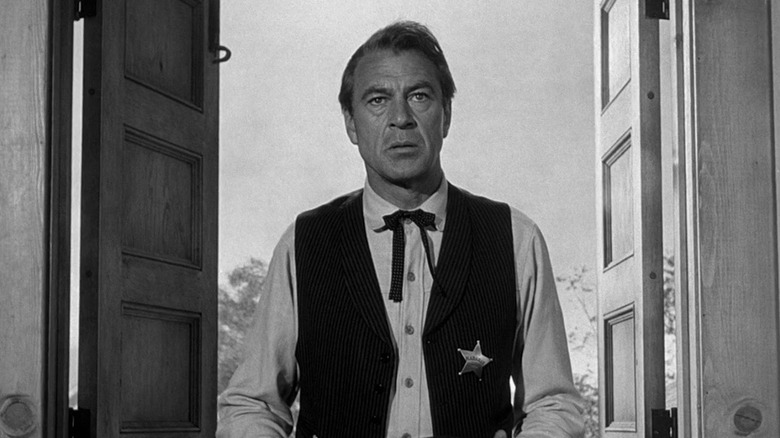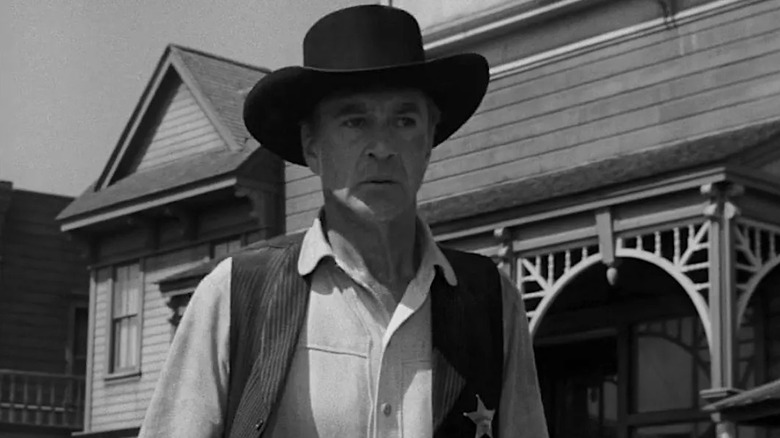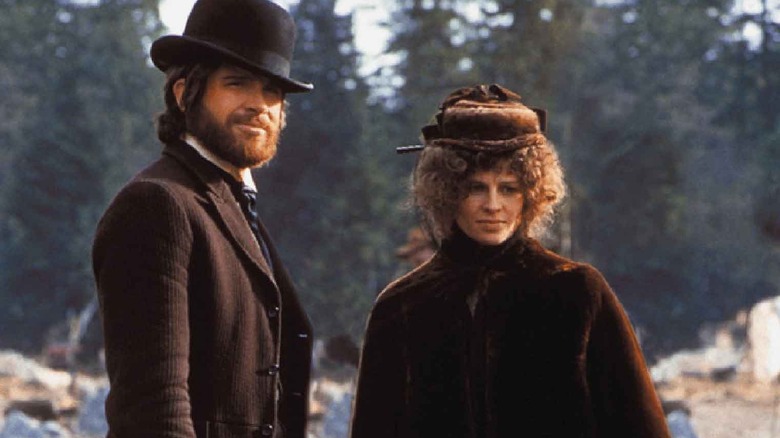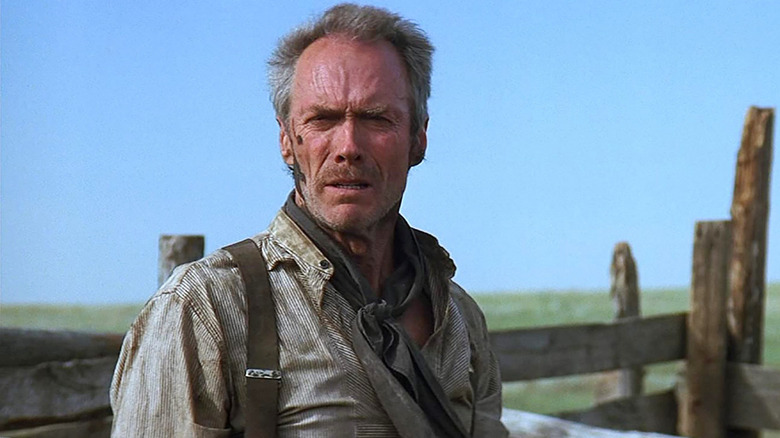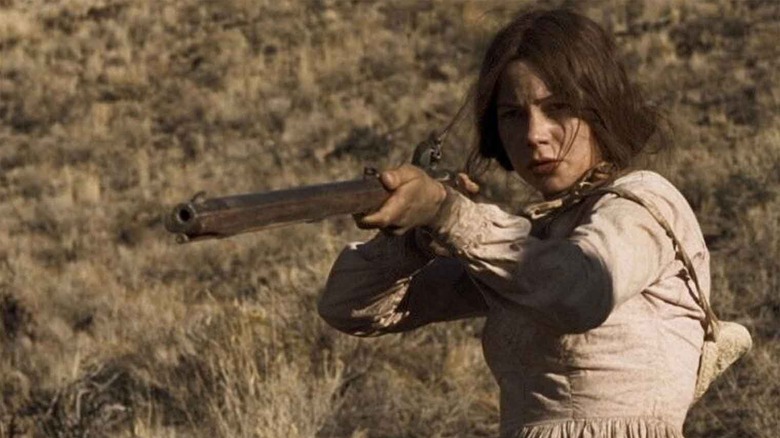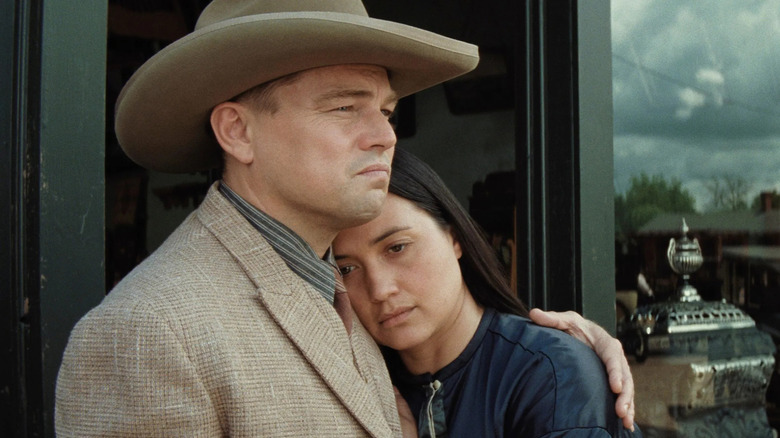5 Best Revisionist Westerns Everyone Should Watch At Least Once
In the early days of Hollywood, Westerns dominated the box office. Shootouts and horse chases were exciting to watch and easy to understand without dialogue during the silent movie era. Audiences were drawn to stories of brave cowboys and mustache-twirling villains because, in times like the Great Depression when hope was hard to find, they could escape into uplifting tales of a hero winning the day. Then, after World War II, in the 1950s, the U.S. emerged as a mighty force to be reckoned with. We had conquered the frontier and helped defeat the Nazis. As such, Westerns became more popular than ever because they reflected our national identity, which was built on a clear good versus evil narrative.
However, the Western genre took a different path when Americans no longer felt that swell of pride in their country. While there are some exceptions, in the 1960s and 1970s Westerns became experimental and reinvented their tropes. During this time period, the U.S. rode into Vietnam as if they were tough cowboys sent to wrangle the lawlessness of communism, all while citizens back home were outraged and led massive protests. A new sub-genre of revisionist Westerns captured this chaos and dissent by completely upending everything that had been established about the genre for decades. The inherent violence of frontier life was thus questioned and seen as traumatizing, not worthy of celebration. Likewise, the Native Americans who had previously been demonized and the women who were ignored or reduced to damsels in distress often became the story's focus. In truth, of course, revisionist Westerns are as expansive as a desert landscape, so this list will only include some of the most essential ones.
High Noon
Tony Soprano once hailed Gary Cooper as "the strong, silent type." He certainly embodied this in the many Westerns he starred in, among them"The Virginian," "The Westerner," and "The Plainsman." But "High Noon" is regarded by critics as his greatest achievement. The film has all the hallmarks of a classic oater, as it centers on a gang of outlaws coming to terrorize a town and the law-abiding sheriff who must stop them in a shootout. Except, Marshal Will Kane (Cooper) is not sure he wants to face them.
"High Noon" unfolds in real time, making the tension as sharp as a bowie knife as we wait to see if Cooper's conflicted character will stay and fight or run away with his wife. The movie is more of a slow-burning psychological drama than your typical guns-a-blazing, horse-charging actioner. And though "High Noon" was released in 1952, well before the revisionist Western film movement of the 1960s and 1970s, it contains many of the same elements that subvert the genre's traditions.
"High Noon" does not present a welcoming frontier town that will band together and stand for what's right. Countless townspeople ignore Kane's pleas for help, even those who are meant to be leaders such as the local judge, a pastor, and the mayor. Instead, they flee, lie, or hide, allowing injustice to happen out of their own sense of self-preservation. Director Fred Zinnemann's film showcases a United States of America that is not united in the very least and is filled with citizens who will easily betray one another. "High Noon" does not glamorize the impending showdown as something thrilling, instead languishing in Kane's anxiousness and isolation, as well as his strong desire to throw everything away. The movie's bitter mood is exactly why John Wayne famously hated it and made "Rio Bravo" with director Howard Hawks as a response.
McCabe & Mrs. Miller
A director as idiosyncratic as Robert Altman would inevitably give the classic Western a bleak, unconventional twist. Indeed, just about every aspect of his 1971 film "McCabe & Mrs. Miller" deliberately bends what we know and love about the gunslinging genre. The lead characters are those you would typically overlook in a small frontier town: a cocksure but ambitious gambler and a shrewd sex worker who open a brothel, hoping to transform their dingy mining enclave into a thriving enterprise before corporate overlords swoop in to claim it for themselves.
Altman's signature wandering camera, with its frequent pans and zoom shots, does not capture panoramas of arid deserts but rather a wintry, desolate hamlet in the northwestern United States. The cinematography is flat — and, quite frankly, ugly — awash in browns and grays, as if mud had been smeared across the camera lens. "McCabe & Mrs. Miller" is not as linearly structured as most Westerns either, being held together by loose plot threads that move at a plodding pace. The film also features anachronistic music in the forms of soft and somnolent Leonard Cohen songs that add to the overall melancholy atmosphere.
As the director, Altman completely envelops you in the film's dismal setting and the struggles of its characters, who are weak and flawed instead of triumphant heroes. As Bryan Young once observed for /Film, this then-new style of Western would even go on to influence a movie as worlds apart as "Solo: A Star Wars Story," especially its tragic tone and patchwork narrative.
Unforgiven
Aside from John Wayne, no other modern movie star has been as synonymous with Westerns as Clint Eastwood. The man made a name for himself as, ironically, The Man With No Name in Sergio Leone's famous Spaghetti Westerns, which themselves started the wave of revisionist Westerns. Leone's films had morally dubious protagonists and a grimy depiction of an ultra-violent frontier where the heroes do not always prevail. But after making over a dozen Westerns, both traditional and revisionist, it was Eastwood who, by both directing and starring in "Unforgiven," was able to deliver what is now recognized as one of the most definitive anti-Westerns.
Eastwood plays William Munny, a grizzled outlaw who retires to a pig farm to raise his family. He is tormented by the carnage of his past, having once killed "just about everything that walks or crawled at one time or another," even women and children. Be that as it may, Munny must let go of these ghosts in order to go up against a sadistic sheriff — Gene Hackman's Little Bill — who enjoys the oppression of his most vulnerable citizens. When one of the sex workers in a small town is disfigured by her angry client, Little Bill even takes pleasure in actively stopping the vigilantes who want to go after him.
"Unforgiven" is an indictment of police brutality, as Little Bill wields his power to viciously hurt whoever he pleases and pick and choose who deserves to suffer or be defended. Munny, however, is not a valiant hero riding in to save the day; he has his own bloodshed to account for, yet the audience still roots for him. Munny is trying to live a quiet life in such a volatile place where law and order are not clear-cut, and it's exactly that tension that makes "Unforgiven" widely considered to be Eastwood's best movie.
Meek's Cutoff
"Meek's Cutoff" is not a particularly easy watch. Director Kelly Reichardt does everything in her power to immerse viewers in the harsh life of settlers heading across the Oregon desert in the 1800s. Reichardt uses naturalistic lighting; hence, in scenes where the men and women gather around the crackling fire under a twilight sky, they're illuminated only by the flames, making it difficult to make out their faces or much of anything. It can also be hard to hear the film's actors when they speak in a whisper. There's no magical Hollywood lighting or artificial gloss from the studio sets of Westerns past.
In "Meek's Cutoff," the men in charge turn what was supposed to be a two-week journey into a perilous five-week fiasco as they become lost and start running low on food and water. The wives are far more capable of navigating the land, but they are bound to their husbands' foolish decisions and forced to loiter in the background while the men debate their next move. Despite these life-and-death stakes, the film moves very slowly, making it a much more pensive oater than we are used to watching.
"Meek's Cutoff" squanders any romanticization of Manifest Destiny, exposing the idea that the white men who settled in the West were not necessarily upstanding and resourceful heroes. Reichardt further incorporated real-life written accounts of women who were on the Oregon Trail into her screenplay, giving voice to those who are typically ignored in narratives of Western conquest. Meanwhile, Michelle Williams delivers one of her best performances in the movie as Emily Tetherow, a character who, as Kira Deshle previously wrote for /Film, "initially appears as a docile, unassuming woman, but when things start to go south, she reveals an inner strength and determination that no one else in the group can match."
Killers of the Flower Moon
Martin Scorsese's "Killers of the Flower Moon" exposes some of the most insidious crimes white men have ever committed against Native Americans. Here, we witness the genocide and capitalist greed that truly defined the Old West, not fun shoot 'em ups and desert adventures. When the real-life Osage community discovered an abundance of oil on their land, they became some of the wealthiest people in the world. This made them the targets of the malevolent William Hale, who's played in Scorsese's film by Robert De Niro.
Hale presents himself as a pillar of the community, funding local dance studios and supporting hospitals to avoid drawing suspicion to the bloody plot he's put into motion — one that involves the white male Oklahoman settlers marrying Osage women while secretly planning to murder them or their relatives in order to inherit their headrights, along with the oil rights that can be passed on after their death. Leonardo DiCaprio also stars as Ernest Burkhart, Hale's nephew and a weaselly man with a perpetual frown who kowtows to his uncle's evil plans. Elsewhere, as Ernest's wife Mollie, Lily Gladstone projects quiet strength and composure, even as she is slowly poisoned by her own husband.
"Killers of the Flower Moon" is one of the most searing revisionist Westerns of modern times because it holds nothing back about the U.S.' true treatment of Indigenous peoples. In typical Scorsese fashion, we are not shielded from the grim murders of the Osage, which include explosions that rip their houses apart, being left to rot alone in a river, and even being shot in the front yard while pushing a baby stroller. Scorsese also de-centers the white savior narrative of the original book, where the FBI gallantly swoops in to investigate. Instead, "Killers of the Flower Moon" rightfully focuses on Mollie's complex relationship with her husband and the sheer wickedness of those who believed they had a right to the Osage's lands.
